This place was very different from my familiar Midwestern home. I stared out the car window, squished in the backseat of our Subaru hatchback. I had camping gear piled up on the seat next to me, spilling over onto my lap as we wound around sharp curves, descended into wide valleys, and climbed up and over steep hills. Sharp mountain peaks loomed above. I was captivated. Never in my life had I seen a landscape so steep and so majestic.
We parked our car at the trailhead, and I huffed and puffed, forcing my body up, and up, and up towards the overlook. The view was stunning. In front of me, I saw the tallest mountain in New Zealand, with sharp, grey peaks jutting out of its snowy blanket. I saw an enormous river of glacial ice filling the valley below, and a lake colored like milk with small icebergs bobbing up and down.
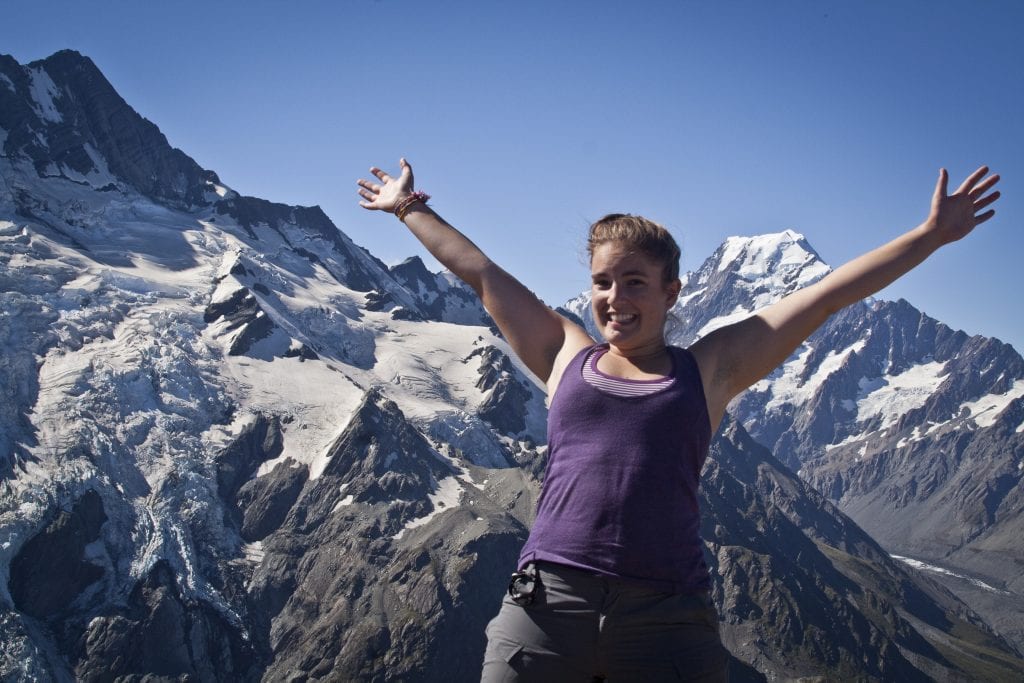
Can you tell I’m having fun?
After that, I never looked back. I was hooked. The steep descent back to the car left my knees trembling and my feet blistered, but the next weekend, I came back for more. I knew that this was where I wanted to be: I wanted to explore this incredible landscape and learn more about the forces of ice that had shaped it.
Fast-forward four years, and I am pursuing a master’s degree in glacial geology. My fascination with glaciers and mountain landscapes morphed into a passionate dedication to pursue a challenging research project in a remote, mountainous field area: The Twin Sisters Mountains, just across the valley from Mount Baker in the North Cascades. I wanted to learn more about how the Sisters Glacier had shaped this stunning landscape. To do this, I searched for a special type of helium called “helium 3” in the mountainside. Helium 3 is created by energy called “cosmic rays” that come from exploding supernovas in outer space. These cosmic rays fly through our atmosphere and strike the surface of the Earth, jumbling chemical structures and creating helium 3 in rocks.
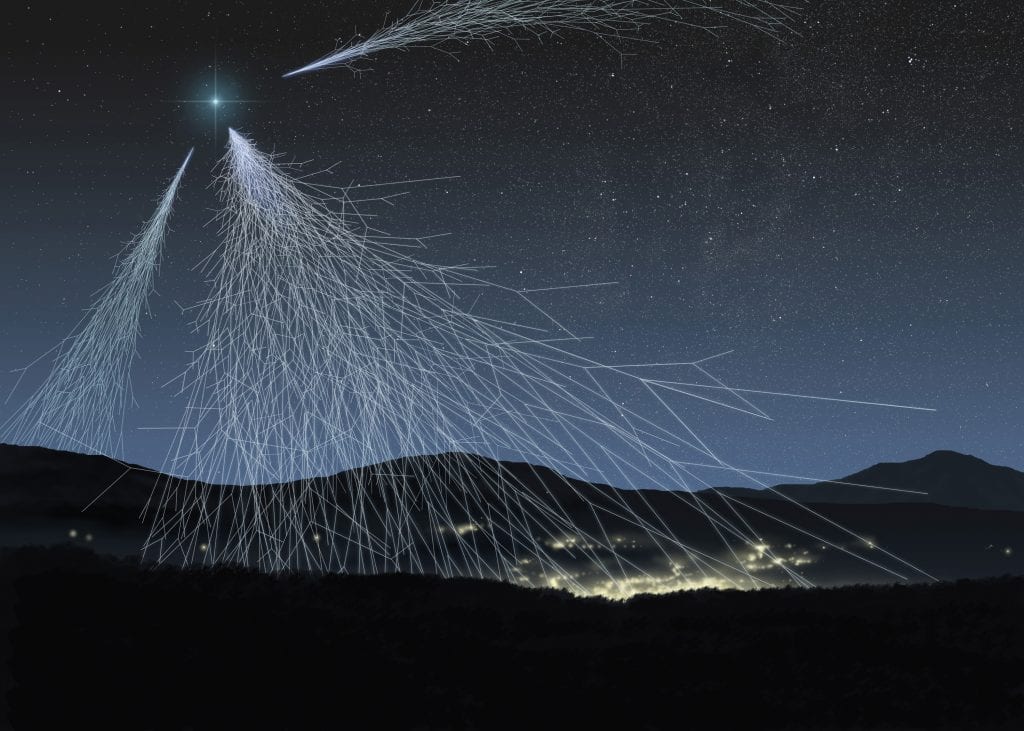
A beautiful conceptual image of cosmic rays cascading through the atmosphere.
Think of the cosmic rays like lasers from outer space, that strike the surface and “burn” the rock, creating helium 3. As the rock sits at the surface, it gets struck by more and more lasers, creating more and more helium 3. Most of the lasers just strike the outer surface of the rocks, but some move faster and are able to penetrate a few inches below the surface. Some move so fast that they can create helium 3 up to six feet below the surface. The result is a gradient of helium 3 accumulation, with the majority of helium 3 concentrated at the surface, and less and less, deeper into the rock.
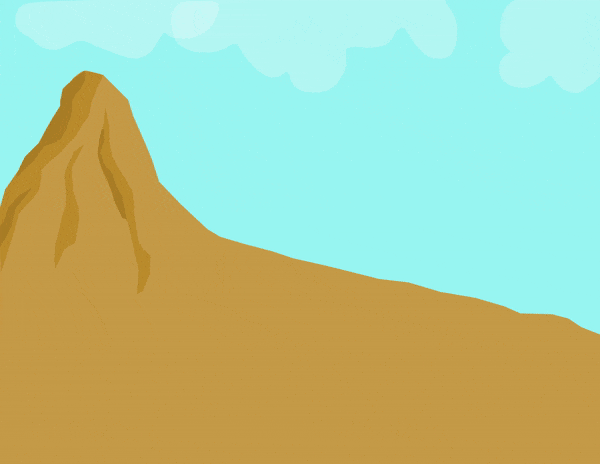
A cross-section gif of a mountainside where helium 3 (red dots) are being created by cosmic rays (red squiggles).
After being struck by cosmic rays for thousands of years, the mountainside was covered by the growing Sisters Glacier that moved and ground away at the rock beneath for about 2,000 years. Within the last few centuries, the glacier melted away, leaving behind rocks that were once below the surface. These rocks should have less helium 3 than expected, based on the fact that they were exposed to cosmic rays for about 9,000 years. Measuring the amount of helium 3 in these rocks will tell me how much rock the glacier eroded away.
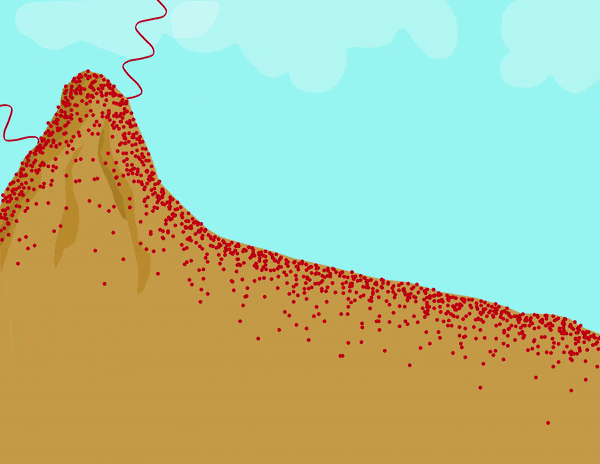
A cross-section gif of a mountainside where the glacier is eroding away at rock with accumulated helium 3.
Collecting rock samples from this area was quite a challenge, to say the least. The terrain was extremely rugged. Just getting to the field area required eight hours of bushwhacking: climbing over rotting logs, splashing through cold streams, and scrambling up steep scree. When we finally made it, we were rewarded with stunning scenery. I made three separate trips out there with my field team. We scrambled around the steep, rocky slopes, hammered out precious rock samples, took detailed notes, showered in frigid snowmelt waterfalls, and cooked some delicious homemade pizza over our camp stove.
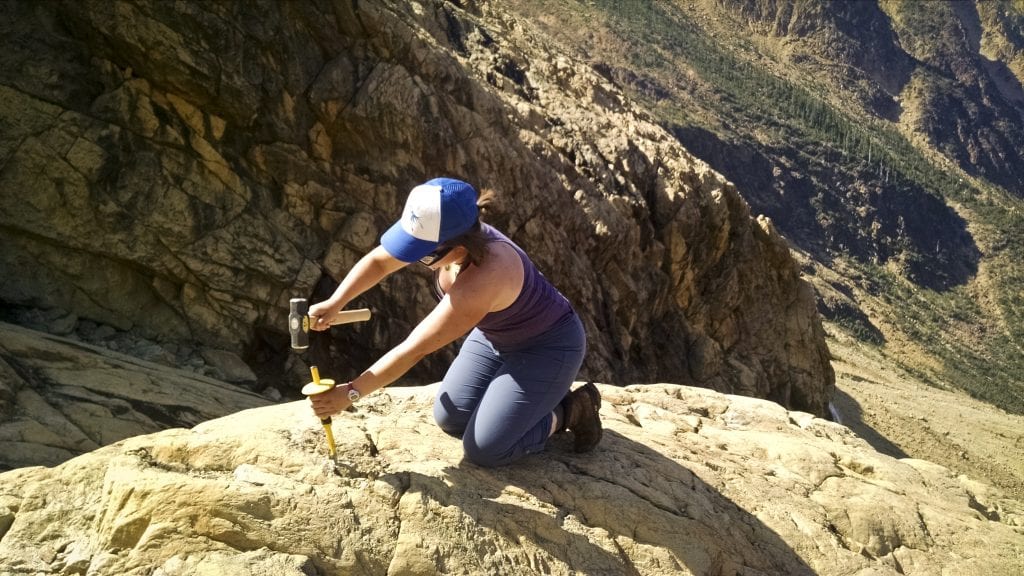
Here’s me hammering out a rock sample
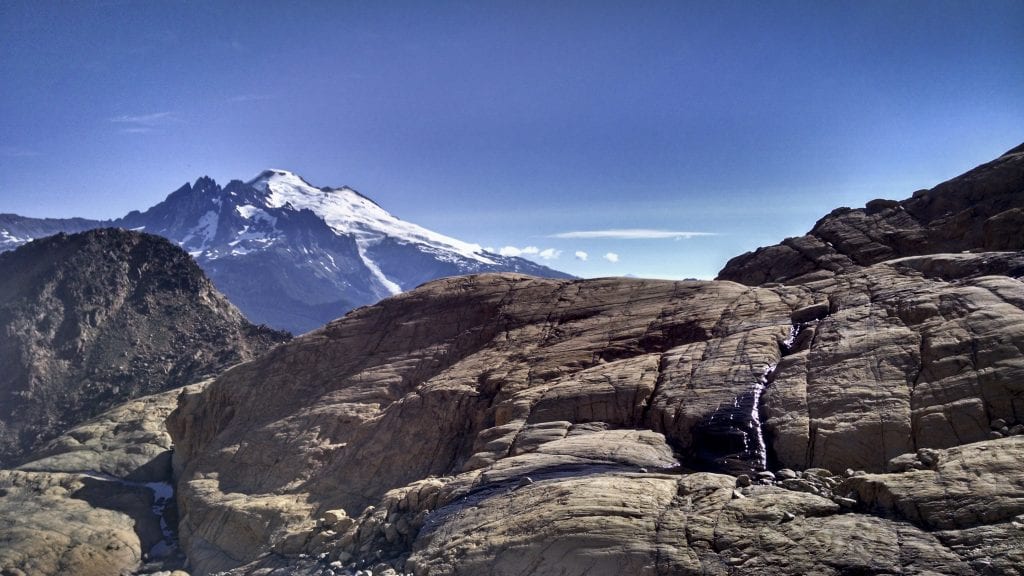
An iconic view of glacially-scoured bedrock in the Twin Sisters, with Mount Baker looming in the background
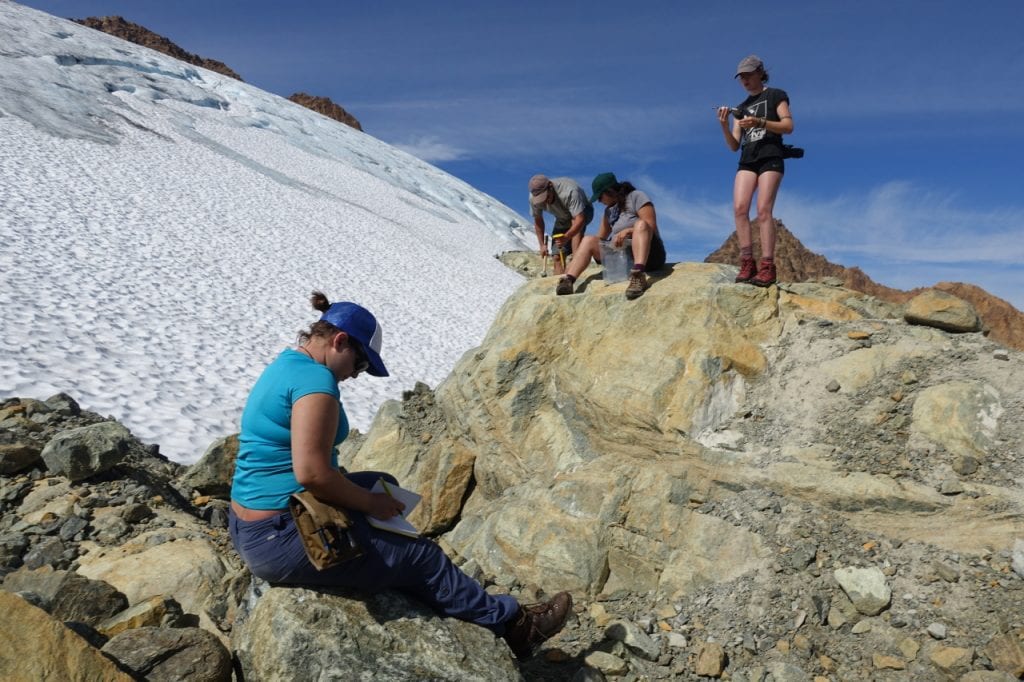
Me with my field team, taking notes as we hammer away to extract a rock sample.
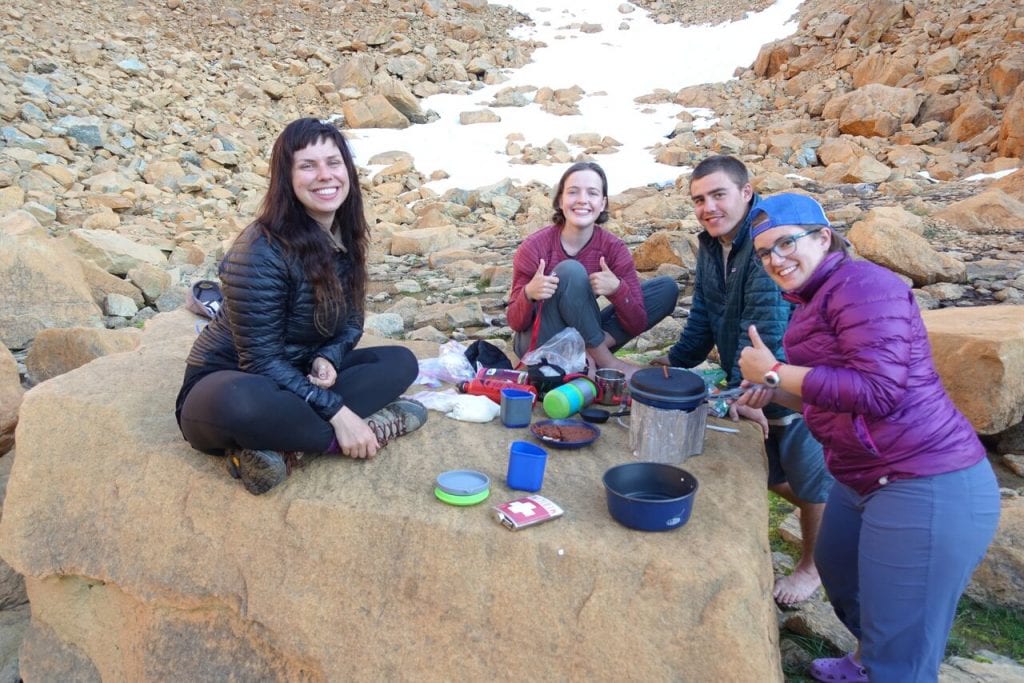
Here we are cooking up some delicious backcountry pizza over a camp stove.
My question remains unanswered. I am currently crushing up my rock samples for analysis and sifting through a pile of data. It’s a fascinating puzzle, and I hope to soon unlock the secrets that the mountain holds. Only then will we discover how the forces of ice morph and shape this stunning mountain environment in the North Cascades.